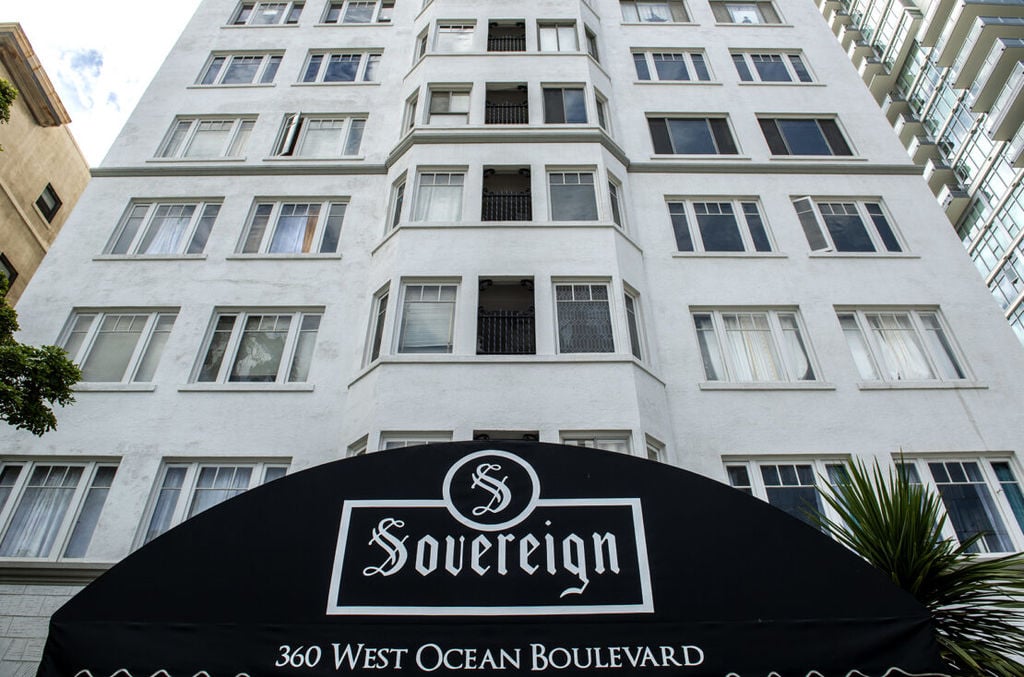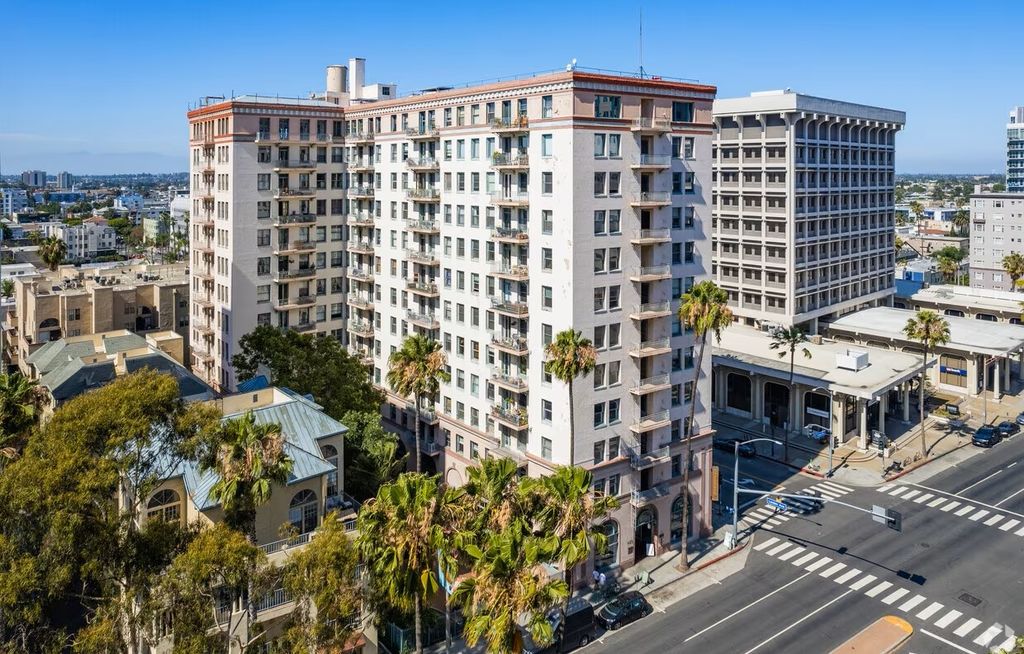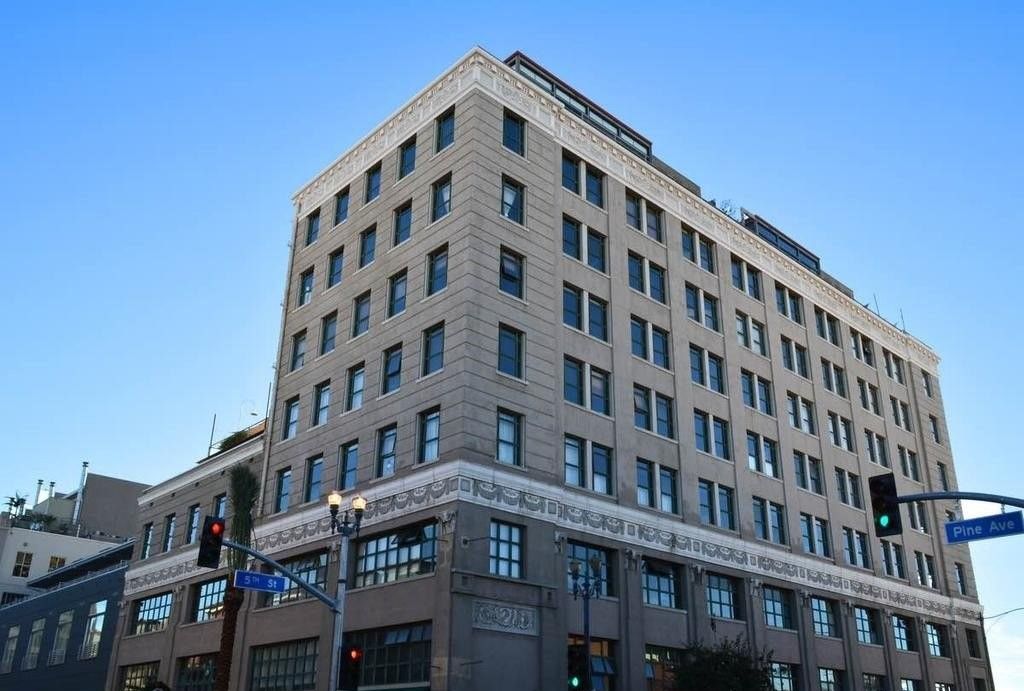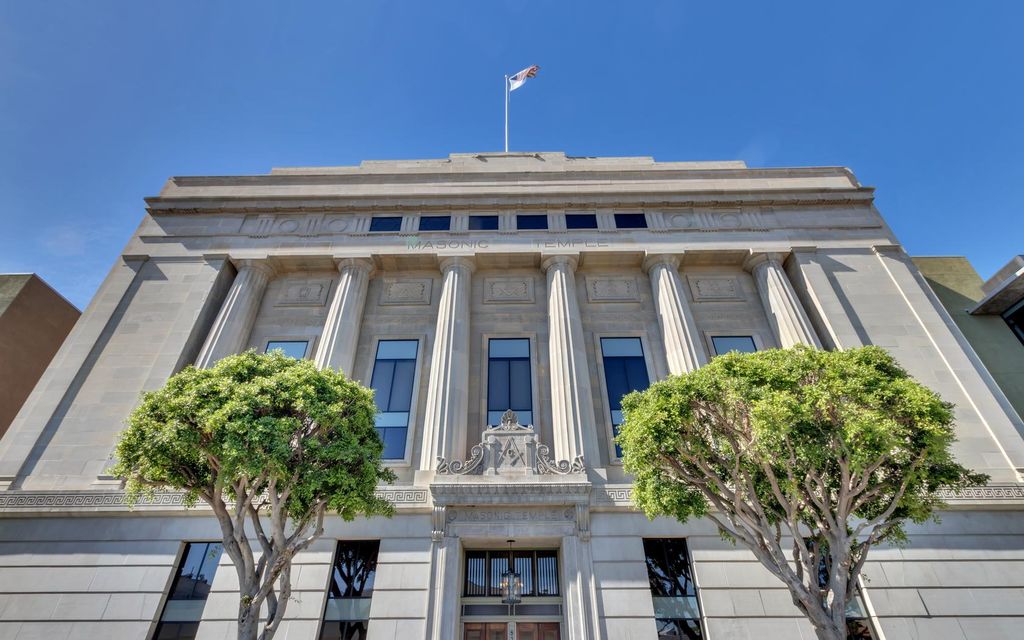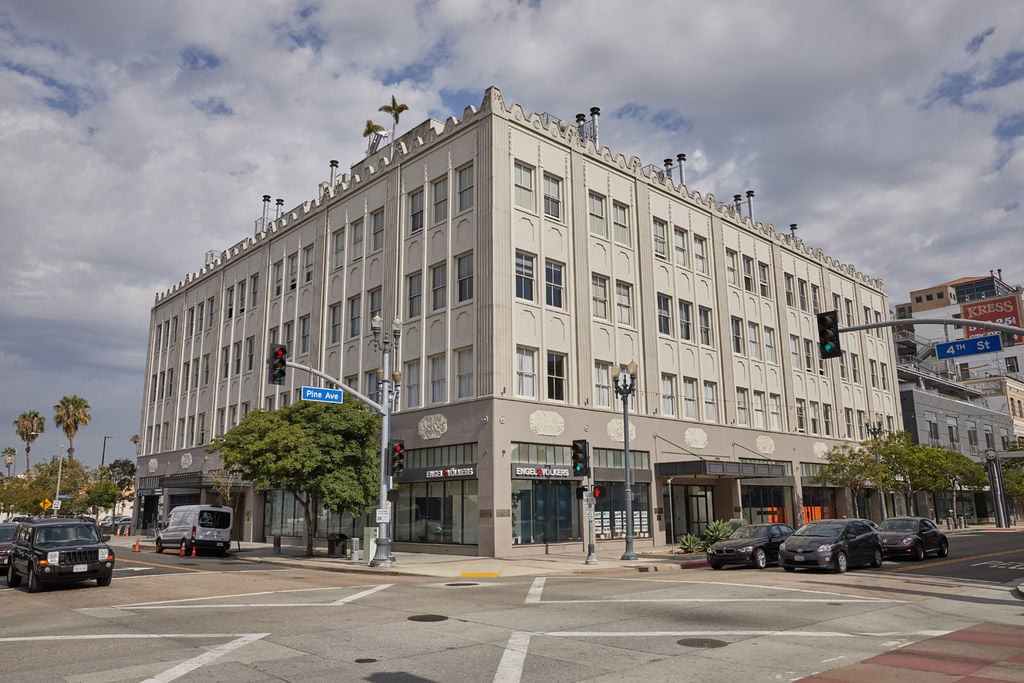Long Beach has a history as rich and diverse as its architecture. Among the city’s many treasures are its historical condos and loft buildings. From the city’s green-roofed icon, the Villa Riviera, to the revamped Masonic temple which now houses modern lofts, these building showcase some of the most recognizable architecture in the city. Here are some of the Long Beach’s most iconic structures that have shaped our skyline and culture:
Villa Riviera: Timeless Elegance
The Villa Riviera, a 16-story building completed in 1929, stands as a testament to Long Beach’s golden era of architecture. Its Mediterranean Revival style and intricate detailing make it a standout landmark. Offering stunning ocean views and a location within walking distance of the beach, the Villa Riviera has maintained its allure for decades.
The Willmore: A Glimpse into the Past
Originally built in 1925, The Willmore showcases the charm of Spanish Colonial Revival architecture. Its red tile roof and ornate façade evoke the romance of old-world Spain. Once a hotel that hosted notable figures like Charlie Chaplin and F. Scott Fitzgerald, it has now been converted into residential condos, seamlessly blending historic character with modern comforts.
The Sovereign: Where History Meets Luxury
The Sovereign, constructed in 1922, exemplifies the Beaux-Arts architectural style. Its grand entrance, adorned with intricate carvings and columns, harks back to an era of opulence. Now converted into condos, The Sovereign offers residents a chance to live in a piece of living history, boasting a stunning lobby and well-preserved period details.
Cooper Arms: Art Deco Delight
Built in 1923, the Cooper Arms showcases iconic Art Deco style with geometric patterns, sleek lines, and decorative elements. Its historical significance and central downtown location have made it a beloved part of the Long Beach skyline.
The Lafayette: Modern Flair with a Vintage Touch
The Lafayette, constructed in 1928, effortlessly combines Art Deco and Spanish Colonial Revival influences. Its distinctive ziggurat roofline and ornamental accents create a visual delight. This building has been lovingly restored and repurposed as condos, allowing residents to enjoy both historic charm and modern amenities.
Kress Lofts: From Retail to Residences
Dating back to the 1920s, the Kress Building was originally a five-and-dime store. Today, it stands as a testament to adaptive reuse, transformed into stylish loft-style condos. The Kress Lofts retain the building’s original character, featuring high ceilings, large windows, and an industrial aesthetic that pays homage to its retail roots.
Temple Lofts: Where History and Urban Living Converge
Formerly the Masonic Temple, the Temple Lofts are a striking example of adaptive reuse. Constructed in 1927, the building’s transformation into lofts preserves its historic architectural elements while offering a contemporary living experience. The blend of old and new creates a unique atmosphere that’s both nostalgic and modern.
The Walker Building: A Slice of Nautical History
Built in 1929, The Walker Building boasts a distinctive nautical Art Deco style, with a façade featuring maritime motifs. This design pays homage to Long Beach’s maritime heritage. The building’s prow-like design is a true standout. Today, The Walker Building stands as a residential landmark, connecting residents with the city’s past.
Buying a historic condo or loft presents an exciting opportunity to own a piece of the past while enjoying modern conveniences. These properties offer a unique blend of nostalgia, architectural beauty, and urban living. However, like any real estate venture, it comes with pros and cons to consider before making the decision to purchase a historic gem.
Pros:
Architectural Beauty and Character:
Historic condos and lofts often boast intricate details, ornate facades, and unique features that set them apart from newer buildings. In addition, living in a space with such character can be incredibly satisfying and visually inspiring.
Location and Heritage:
Many historic buildings are situated in prime locations, close to cultural attractions, entertainment, and city centers. They often carry a sense of heritage and connection to the city’s history, offering a deeper sense of place.
Exclusivity:
Owning a piece of history brings a sense of exclusivity. Historic condos and lofts are limited in number, making them a unique and coveted commodity in the real estate market.
Community and Lifestyle:
Some historic buildings have a strong sense of community, as residents share an appreciation for the building’s history. Living in such a community can lead to meaningful connections with like-minded individuals.
Investment Potential:
Well-maintained historic properties can appreciate in value over time, especially if the surrounding area experiences urban revitalization.
Cons:
Maintenance and Upkeep:
Historic properties require meticulous upkeep and maintenance to preserve their original charm. This can sometimes lead to higher maintenance costs compared to newer constructions. Additionally, it’s important to budget for potential upkeep expenses when considering a historic property.
Limited Amenities:
Older buildings might lack some modern amenities that newer condos offer, such as state-of-the-art fitness centers or smart home technology. Furthermore, it’s essential to consider how these differences may impact your lifestyle and daily convenience.
Renovation and Customization:
While the historical aspects are appealing, they can also restrict major renovations or changes to the building’s structure due to preservation regulations. Moreover, it’s crucial to understand how these regulations may affect your plans for the property.
Energy Efficiency:
Older buildings might not be as energy-efficient as modern constructions, potentially leading to higher utility bills.
Noise and Privacy:
Older buildings might not have the same level of soundproofing as newer ones, leading to potential noise and privacy concerns.
Lack of Parking:
Many of the older buildings don’t come with deeded parking.
Factors to Consider
Historic Designation:
Research whether the building is officially designated as historic, as this can affect what modifications you can make to the property.
Preservation Rules:
Be aware of any preservation regulations that might affect your ability to alter the property’s exterior or interior.
Maintenance Costs:
Understand the potential costs of maintaining a historic property, including restoration, repairs, and ongoing upkeep. Furthermore, being financially prepared for these expenses is crucial when investing in a historic property.
Resale Value:
Investigate the property’s resale value trends in the area, considering how the historical status might impact future demand.
Financing and Insurance:
Historic properties might have unique financing and insurance requirements due to their age and historical significance. Additionally, these factors can impact your overall investment strategy and ownership experience.
Personal Preferences:
Consider your lifestyle preferences – do you value historical charm more than modern amenities, or is it a balance you’re seeking?
Long-Term Goals:
Think about your long-term plans. Will the property suit your needs as they evolve over time?
Buying a historic condo or loft is a decision that involves careful consideration of both emotional and practical factors. However, while the charm and allure of living in a piece of history can be undeniable, it’s essential to weigh the pros and cons and align them with your lifestyle and goals before making your move.
If you’d like more information on buying a home in Long Beach – historic or otherwise – we’d be happy to help you find a place that meets your needs.




